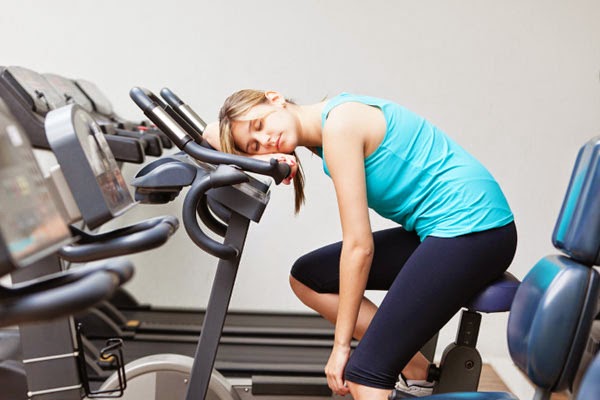Fitness Freedom: Breaking Out of Your Exercise Rut
A lot of time and energy is spent during the months leading up to summer getting your body fit and ready for swimsuit season. But, now that the first month of summer is coming to an end, you might feel like you’re in a fitness rut. If you’re feeling hesitant about pulling out your stars and stripes swimsuit and you’re not feeling great about what you’ve accomplished this year in your fitness journey, it may be time to break out of your exercise rut by re-tuning and revamping your summer fitness plan.“By the time summer hits, you may feel like you haven’t accomplished all of your fitness goals, which can make you feel bad and de-motivated,” explains TayneePearson, personal trainer at Fitness Together Brecksville. “Instead of getting emotional, you should approach it from a problem solving perspective by stepping back and focusing on the basics. Quitting a program or throwing up your hands and never giving anything a real chance isn’t really a solution. You need to decide whether you’re going to focus on solving the problem or perpetuating it.”
If you’re ready to focus on finding solutions for establishing your fitness freedom and breaking out of your exercise rut, the following easy tips can help you regain and maintain a healthy and fit lifestyle during the summer season.
Keep Your Goals Front and Center
With kids home from school, vacations on the horizon and relaxing days at the pool filling your schedule, you might be having a hard time fitting exercise into your summer plans. As warm weather and laid back attitudes settle in this time of year, it’s a good time to review and readjust your fitness goals so they stay part of your summertime routine and not replaced by pool side lounging. One way to keep your goals front and center during the summer months is to sign up for a late summer or early fall endurance event, suggests Pearson. When you have a goal that you are working toward, it makes it easier to stay on course with your fitness plan or it can motivate you to jumpstart your training if you’ve taken a break during the first few weeks of summer.
“Summer isn’t just about spending time at the beach, looking good and being outside,” says Taynee. “A lot of people use summer to prepare for a lot of different races and events. When you’re training for something like a road race, it can be really motivating because you have something you can aim for and train for. Even if it’s just a local 5k race, it’s at least something to help keep you focused and active during the summer.”
Take Fitness with You
Summer is the season to get away from it all by taking family vacations and embarking on new adventures or journeys. But, just because you’re traveling doesn’t mean that you have to get away from your fitness routine while on the road. Just as you check out the best hotels and attractions to visit while on your summer vacations, also make checking out your fitness options a priority as you plan your trip.
When FT’s clients go on vacations, their team of trainers always puts together workouts for their clients to take with them while they’re away. They will research the closest gyms to where their clients are staying or figure out what equipment and set up will be available at their hotels. They make staying active while away from home easy for their clients by building workouts around what equipment and facilities will be available. You can do the same thing too by performing some quick online searches or calling the hotel where you’re staying at so you have fitness ideas to keep you active before you arrive at your destination.
“Having something in hand that you’re going to take with you on your trip will help a lot to keep you focused and pointed in the right direction during your vacation,” says Pearson. “Mentally, you also have to keep reminding yourself how far you’ve come in your fitness level and how stronger you’ve become since you started working out. This will help keep you motivated to keep staying active even when you’re away from your regular fitness routine.”
Have Some Fitness Fun with Your Kids
Fun in the sun is the name of the game during summer break and vacations. The whole idea is to find fun, active things to occupy your time, while promoting a healthy lifestyle for both you and your family. If you have younger kids, it can be as simple as going to the park and running around with the kids. Or, if you have older kids, you can play your family’s favorite sports together. If you’re looking for a more structured workout, check out your local area fitness facilities for summer family training programs or small group classes.
“Summer is the perfect time to getout with your kids and get outdoors,” says Pearson. “The options are ultimately limitless. The idea is to just stay active and be healthy for you and your family.”
If you’re struggling with sticking with a fitness routine as
the summer months get into full swing, get back to the basics by incorporating
activity into your daily lifestyle. Keep it fun, incorporate your family and
enjoy your summer fitness journey.
© 2014 Fitness Together, Inc. All
Rights Reserved. Powered by Fusionbox.
About | Contact | Franchise | Suppliers | History | Leadership | NutritionTogether |Sitemap | PrivacyPolicy | TermsofUse | Facebook | YouTube | Twitter | Linkedin








